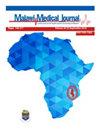Fatigue has a prominent impact on health lasting 12-weeks after COVID-19 infection
IF 0.8
4区 医学
Q4 PUBLIC, ENVIRONMENTAL & OCCUPATIONAL HEALTH
引用次数: 0
Abstract
BackgroundWhile the amount of information on many issues related to COVID-19 has increased, the long-term consequences of illness and disability remain largely unclear. In previous studies on COVID-19 infections, long-lasting functional and symptomatic abnormalities have also been shown. It is predicted that survivors of COVID-19 may have to deal with physical or psychological problems later.Aim We aimed to evaluate long-lasting symptoms including fatigue and investigate the associated risk factors.Methods In this prospective cohort study, 132 consecutive COVID-19 patients who were previously diagnosed and admitted 13±1 weeks after diagnosis were included. The Functional Assessment of Chronic Illness Therapy (FACIT) – Fatigue Scale, the Beck Anxiety Inventory, the Beck Depression Inventory, and the Lawton Instrumental Activities of Daily Living (IADL) Scale were applied in the follow-up visit.ResultsThe median age of the patients (76 male, 56 female) was 52. Eighty (61%) of the patients were hospitalized, while 52 (39%) of them were not hospitalized. At least one symptom persisted in 103 (78%) patients, with fatigue (n=48, 36%) being the most common symptom. Both dyspnea and fatigue were more prominent in women than in men (34% vs. 11%, p=0.001 and 46% vs 29%, p=0.03; respectively). Persisted symptoms including fatigue were not significantly associated with hospitalization status. The FACIT scores of the patients at 12 weeks were positively associated with their depression and anxiety levels (R: 0.55, p=0.0001 and R: 0.42, p=0.0001), while they were negatively associated with their IADL scores (R: -0.25, p=0.004).Conclusions Fatigue was the most frequent persistent symptom. The initial fatigue scores were higher in the severely ill patients. Persistent fatigue was not associated with disease severity but was closely associated with anxiety and depression.疲劳对COVID-19感染后持续12周的健康影响显著
虽然与COVID-19相关的许多问题的信息有所增加,但疾病和残疾的长期后果在很大程度上仍不清楚。在之前关于COVID-19感染的研究中,也显示出长期的功能和症状异常。据预测,COVID-19的幸存者以后可能不得不处理身体或心理问题。目的:我们旨在评估包括疲劳在内的长期症状,并调查相关的危险因素。方法本前瞻性队列研究纳入132例既往确诊并在确诊后13±1周入院的COVID-19患者。随访采用慢性疾病治疗功能评估(FACIT) -疲劳量表、贝克焦虑量表、贝克抑郁量表和劳顿日常生活工具活动量表。结果患者中位年龄为52岁,男性76例,女性56例。80例(61%)患者住院,52例(39%)患者未住院。103例(78%)患者至少存在一种症状,其中疲劳(48例,36%)是最常见的症状。呼吸困难和疲劳在女性中比男性更突出(34%对11%,p=0.001; 46%对29%,p=0.03;分别)。包括疲劳在内的持续症状与住院状态无显著相关。12周时患者的FACIT评分与抑郁和焦虑水平呈正相关(R: 0.55, p=0.0001和R: 0.42, p=0.0001),与IADL评分呈负相关(R: -0.25, p=0.004)。结论疲劳是最常见的持续性症状。病情严重的患者最初的疲劳评分更高。持续性疲劳与疾病严重程度无关,但与焦虑和抑郁密切相关。
本文章由计算机程序翻译,如有差异,请以英文原文为准。
求助全文
约1分钟内获得全文
求助全文
来源期刊

Malawi Medical Journal
Medicine-General Medicine
CiteScore
1.50
自引率
0.00%
发文量
27
审稿时长
>12 weeks
期刊介绍:
Driven and guided by the priorities articulated in the Malawi National Health Research Agenda, the Malawi Medical Journal publishes original research, short reports, case reports, viewpoints, insightful editorials and commentaries that are of high quality, informative and applicable to the Malawian and sub-Saharan Africa regions. Our particular interest is to publish evidence-based research that impacts and informs national health policies and medical practice in Malawi and the broader region.
Topics covered in the journal include, but are not limited to:
- Communicable diseases (HIV and AIDS, Malaria, TB, etc.)
- Non-communicable diseases (Cardiovascular diseases, cancer, diabetes, etc.)
- Sexual and Reproductive Health (Adolescent health, education, pregnancy and abortion, STDs and HIV and AIDS, etc.)
- Mental health
- Environmental health
- Nutrition
- Health systems and health policy (Leadership, ethics, and governance)
- Community systems strengthening research
- Injury, trauma, and surgical disorders
 求助内容:
求助内容: 应助结果提醒方式:
应助结果提醒方式:


